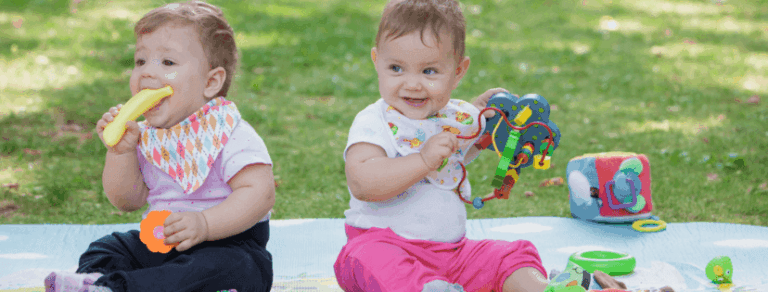Learning how to write is a crucial part of early childhood development. It’s an essential tool that can give preschoolers the foundation for academic success later in life. Exposing young learners to pre-writing activities allows them to build the underlying skills needed for writing. These include fine motor control, organizing thoughts, and overall coordination. Pre-writing exercises also improve their pre-literacy skills. It helps them understand concepts like left to right, up and down, and big and small. They help develop mental pathways for written expression – all prerequisites for writing out a neatly composed sentence. As a parent, you can help hone your preschooler’s skills through fun and engaging pre-writing activities! Here are fifteen pre-writing activities your preschooler will enjoy:
1. Playdough Tracing
Playdough tracing is a pre-writing activity that is both fun and educational. Especially popular among preschool-aged children, playdough tracing is also beneficial for developing motor skills and coordination. Kids can learn the basics of letter formation. They use their hands to form shapes in the dough and trace specific alphabet letters while engaging in a hands-on activity.
Additionally, the tactile property of playdough provides sensory stimulation for young learners. It keeps them engaged for long stretches of time. Playdough tracing may even inspire creative ways of forming letters, such as designing patterns or drawings within each one. Beyond this pre-writing exercise, building things with playdough offers your little learner an open world of creativity!
2. Printing Practice
Printing practice is another pre-writing activity that can help children learn how to write in a fun and interactive way. Using pencils, markers, crayons, or finger paint, kids can draw lines and circles on paper as they try to form familiar shapes like letters from the alphabet. This pre-writing exercise encourages them to think about the shapes of each letter before having to trace or copy them out by hand.
Printing practice also helps support pre-literacy skills such as understanding directionality (for example, tracing left to right across the page). You can make printing practice more engaging by drawing things like animals or figures for your preschooler to follow!
3. Connect The Dots
Connect the dots pre-writing activity is great for teaching kids how to recognize patterns. Children can practice counting and sequencing numbers as they connect the dots in order using pre-made dot pictures or drawing their own. This pre-writing exercise will help them better understand basic shapes and concepts like left-to-right directionality.
In addition, when adding color or other decorations to the finished picture, your little learner can also have an opportunity to explore abstract art! Connect the dots pre-writing activities are perfect for painting a vivid story with pencil strokes or markers.
4. Read And Draw
Reading and drawing pre-writing activities combine literacy and creativity into a fun learning experience! Reading stories and other books aloud to your youngster gives them a better understanding of pre-literacy skills like letter recognition, sequencing, and patterns. Then your preschooler can practice what they hear by retelling the story in their own way – drawing pictures of each scene!
This pre-writing exercise is great for helping children conceptualize new ideas while improving their fine motor control as they draw lines and shapes on paper. Reading stories together will help kids learn how to express themselves verbally and through art. The possibilities are endless with read-and-draw pre-writing activities!
5. Storyboards
Storyboard pre-writing activities allow young learners to explore story structure while expressing themselves creatively. By laying out scenes on paper, preschoolers can practice sequencing and understanding narrative structure. Depending on the story they are exploring, this pre-writing exercise will also help them develop their pre-literacy skills, such as recognizing patterns, letter recognition, and more.
When creating a storyboard pre-writing activity for your preschooler, you have the option of using pre-made templates or having them draw out each scene with crayons or markers. Either way, it’s sure to be an engaging experience that lets your little learner express themselves artistically while also developing early literacy skills!
6. Finger painting
Finger painting pre-writing activities are a fun and interactive way to get your preschooler’s creative juices flowing. By applying colors onto paper with their hands, kids can explore abstract art concepts and pre-literacy skills like tracing and letter recognition. This pre-writing exercise also helps young learners express themselves artistically and gain better control of their fine motor skills.
Finger painting pre-writing activities also offer endless possibilities for exploration – from vibrant rainbows to intricate patterns and shapes! You can even encourage them to draw letters or words on the canvas if they feel up for it. No matter what they create, this pre-writing exercise will inspire creativity and imagination in your preschooler.
7. Stamping
Stamping pre-writing activities are a great way for preschoolers to improve their pre-literacy skills and explore new concepts. By using stamps to create shapes, letters, and more on paper, kids can practice sequencing numbers or patterns, as well as learn about left-to-right directionality. This pre-writing exercise is also fun and interactive – allowing your little learner to express themselves artistically while developing better fine motor control.
You can use pre-made stamp sets or make your own with household items like corks, sponges, and even vegetables! Whichever way you decide to go, your preschooler will be sure to have lots of fun exploring new ideas with stamping pre-writing activities.
8. Letter Tracing
Letter tracing pre-writing activities are perfect for helping preschoolers learn letter recognition and pre-literacy skills. By using a pencil, marker, or crayon to trace letters on paper, kids can gain better control of their fine motor skills while exploring the basics of reading and writing. This pre-writing exercise is also great for improving visual memory – as your little learner will be able to remember what each letter looks like after much practice!
When it comes to letter tracing pre-writing activities, you have the option of making homemade templates or purchasing pre-made ones from stores. The possibilities are endless – so you’re sure to find something that works for your preschooler!
9. Catch And Release
Using paper clips or magnets, kids can practice catching, tracing, and releasing shapes or letters on paper – improving their fine motor control and pre-reading skills. This pre-writing exercise also promotes hand eye coordination. It gives your little learner an opportunity to explore new concepts while developing a better sense of spatial relationships.
When it comes to catch-and-release pre-writing activities, there are many creative ways you can set up this game at home! You can use homemade templates or purchase pre-made ones from stores – either way, your preschooler is sure to have lots of fun exploring new ideas with this pre-writing exercise.
10. Clothespins
Clipping clothespins open & shut strengthens hand muscles so they can better hold a pencil when they start writing later down the road; practice clipping clothespins onto paper cutouts like animals, fruits & vegetables, or letters. This pre-writing exercise is also great for exploring pre-reading skills like letter recognition.
Setting up a clothespin pre-writing activity at home can be done with ease. Simply gather some diverse items like paper cutouts and clothespins, then set them out in front of your preschooler. They’ll have so much fun using their fingers to clip the clothespins open & shut! Not only will they gain better control of their fine motor skills, but they’ll also have lots of fun exploring new concepts while developing pre-literacy foundations.
11. Puzzles
Puzzles aren’t just fun; they also help develop problem-solving skills that will come in handy when kids start learning how to spell & read later on! Try putting together easy jigsaw puzzles that fit together easily enough. This way, younger children don’t become frustrated but still require thinking ahead. This pre-writing exercise is also great for exploring pre-reading skills like letter recognition.
Puzzle pre-writing activities are perfect for a home bonding activity. Simply set out an age-appropriate puzzle and watch your preschooler take control! They’ll have so much fun using their fingers to figure out which pieces go where while gaining better control of their fine motor skills as well as pre-literacy foundations. Your little learner will also develop a better sense of spatial relationships – making puzzles a great pre-writing activity!
Pre-writing activities don’t have to be boring—there are lots of ways you can make them engaging and educational while having fun at the same time! Use these ideas as inspiration while coming up with new ways you can encourage proper letter formation while preparing your preschooler for handwriting success down the line!
At Carepointe Academy, we ensure that children experience the fun of learning by exercising their creativity and discovery through both structured and free-choice activities that allow their natural curiosities to emerge in an accepting and nurturing Christian environment. Visit our website to learn more!








